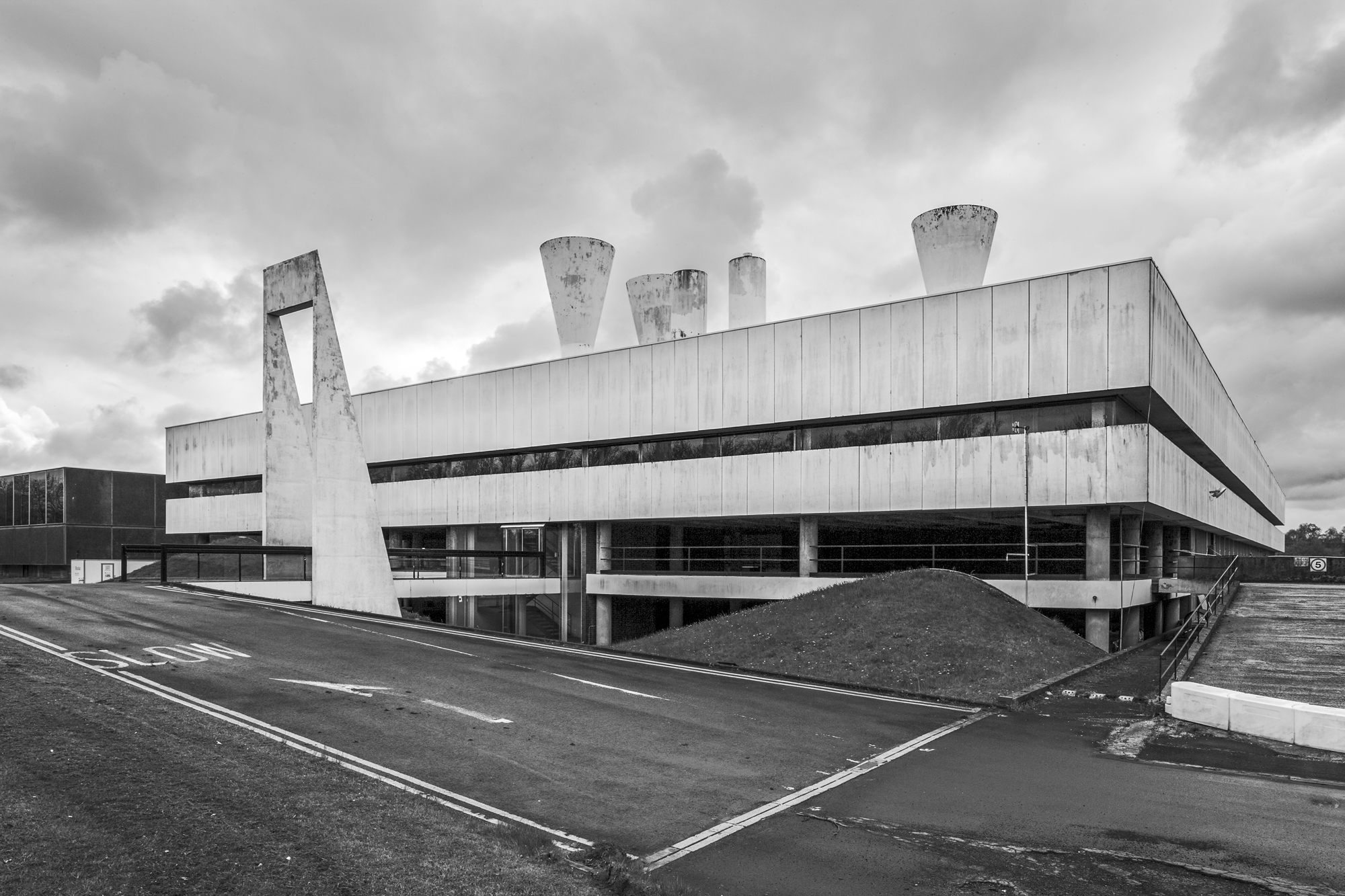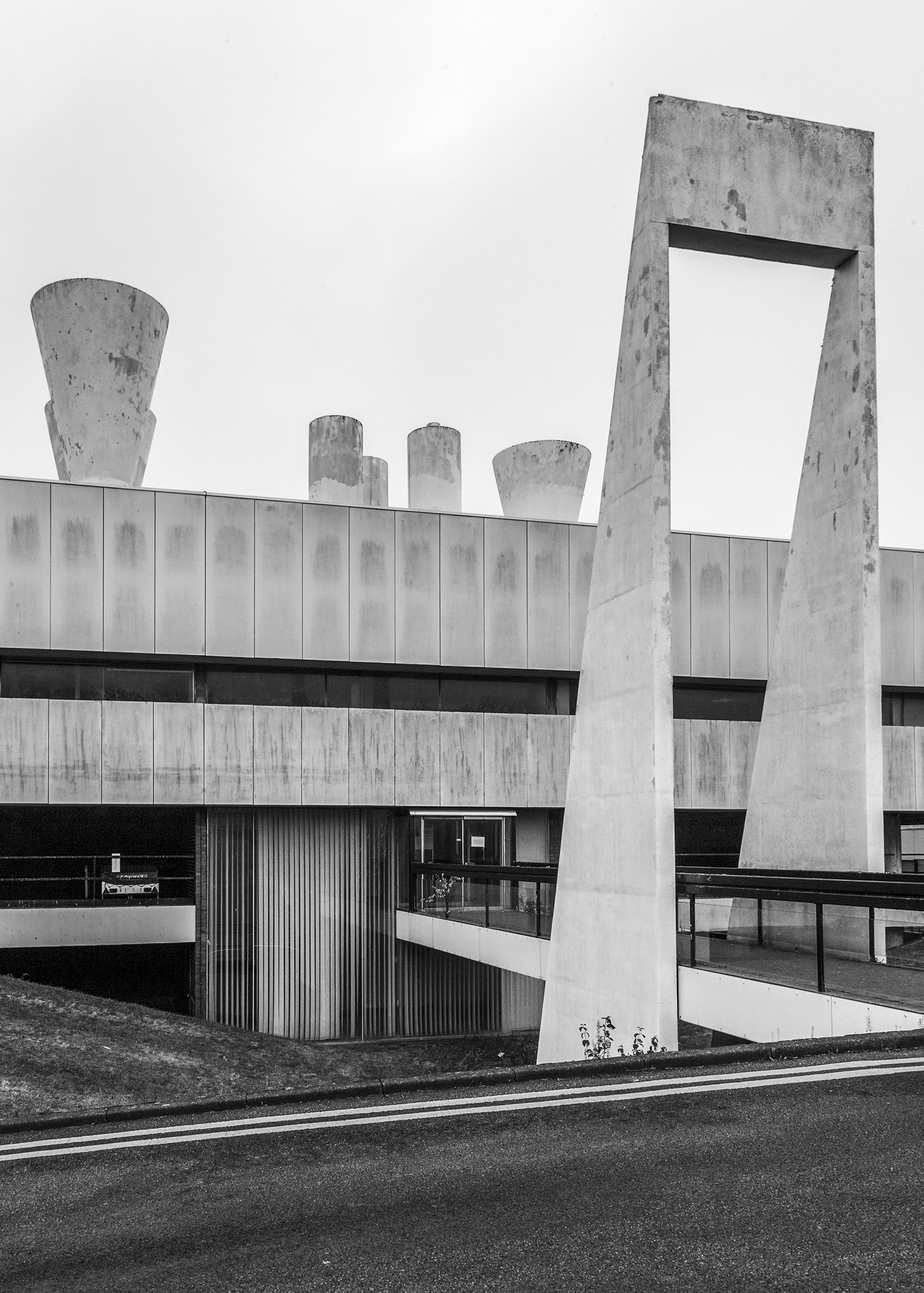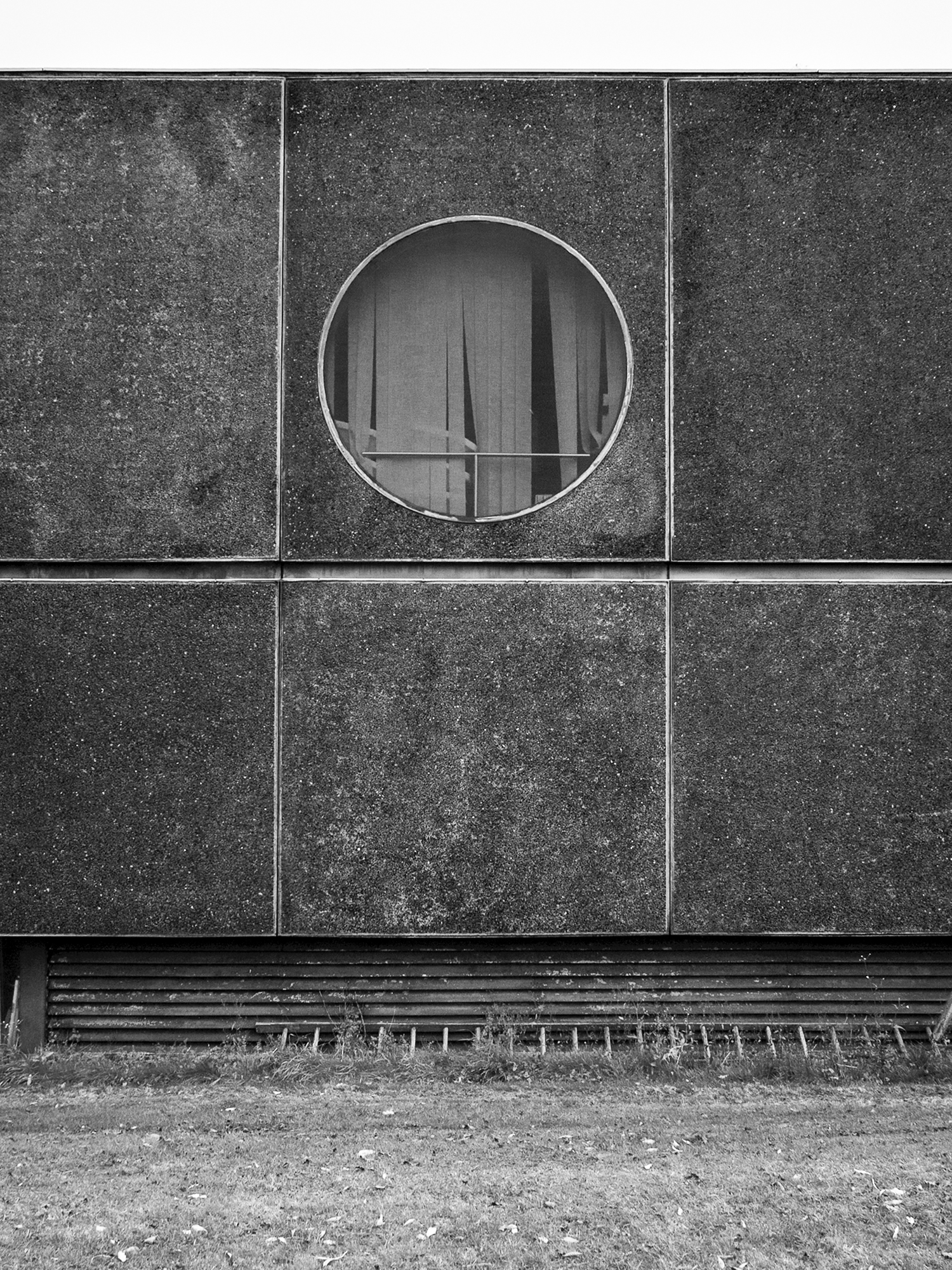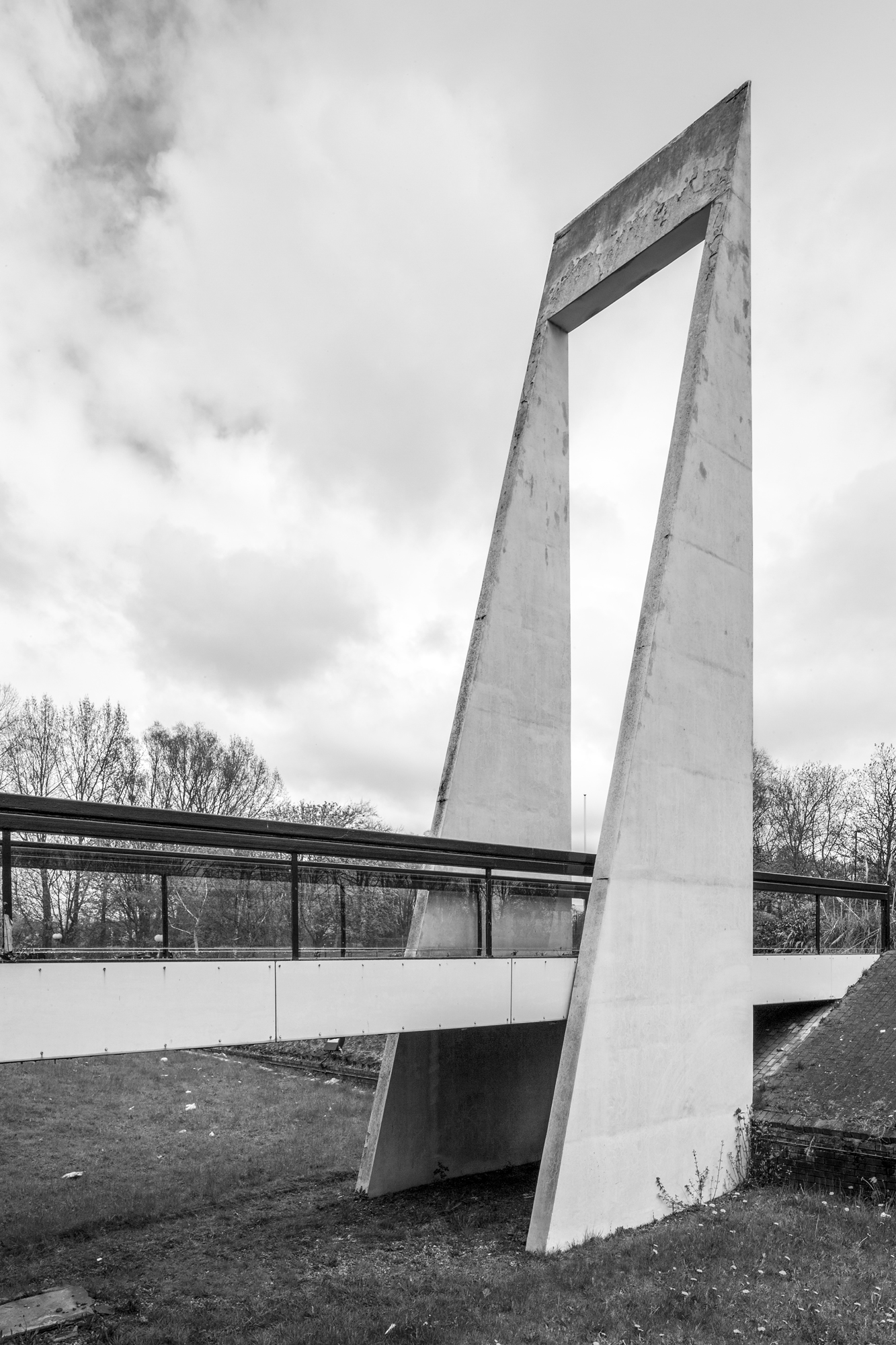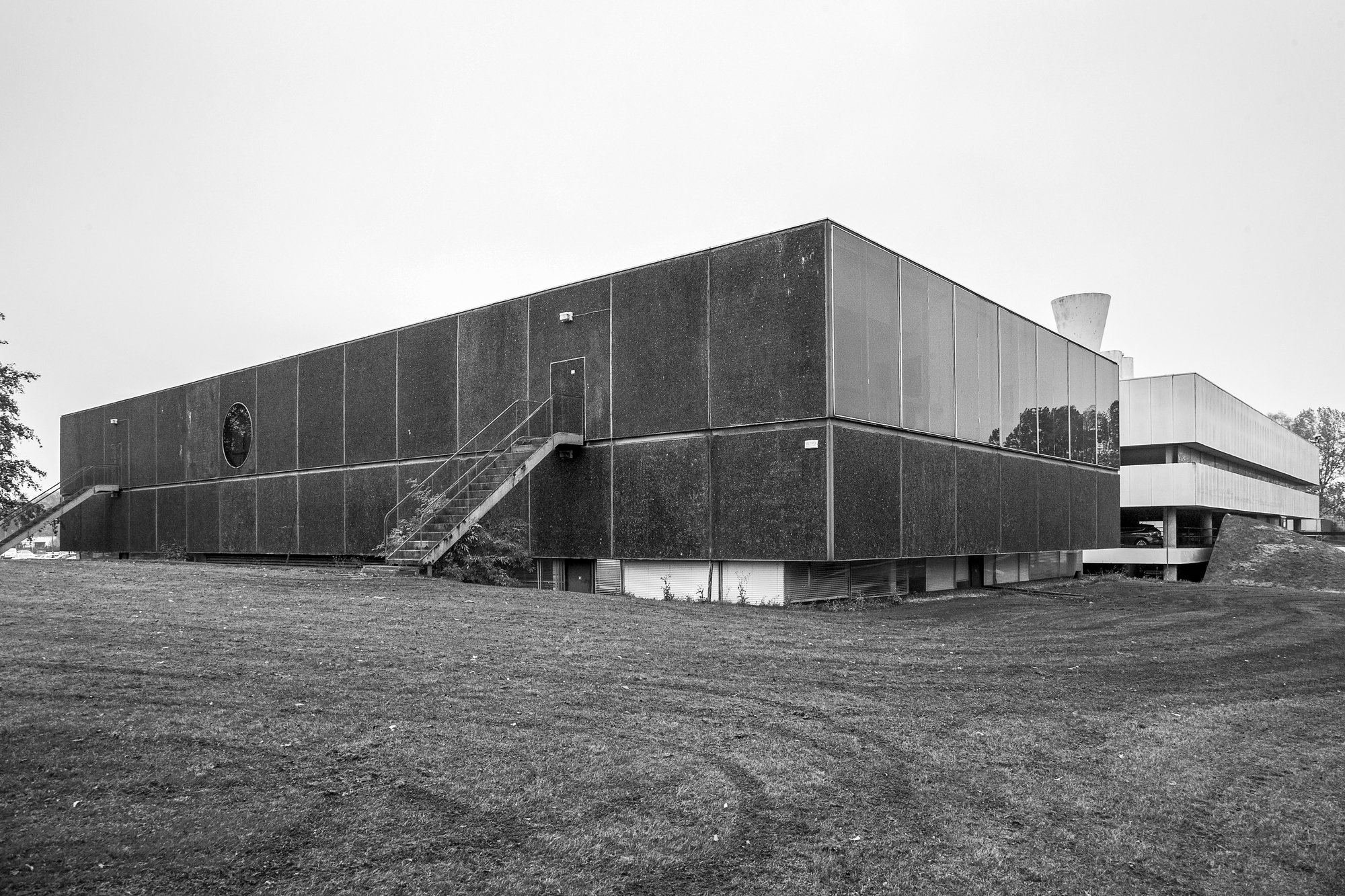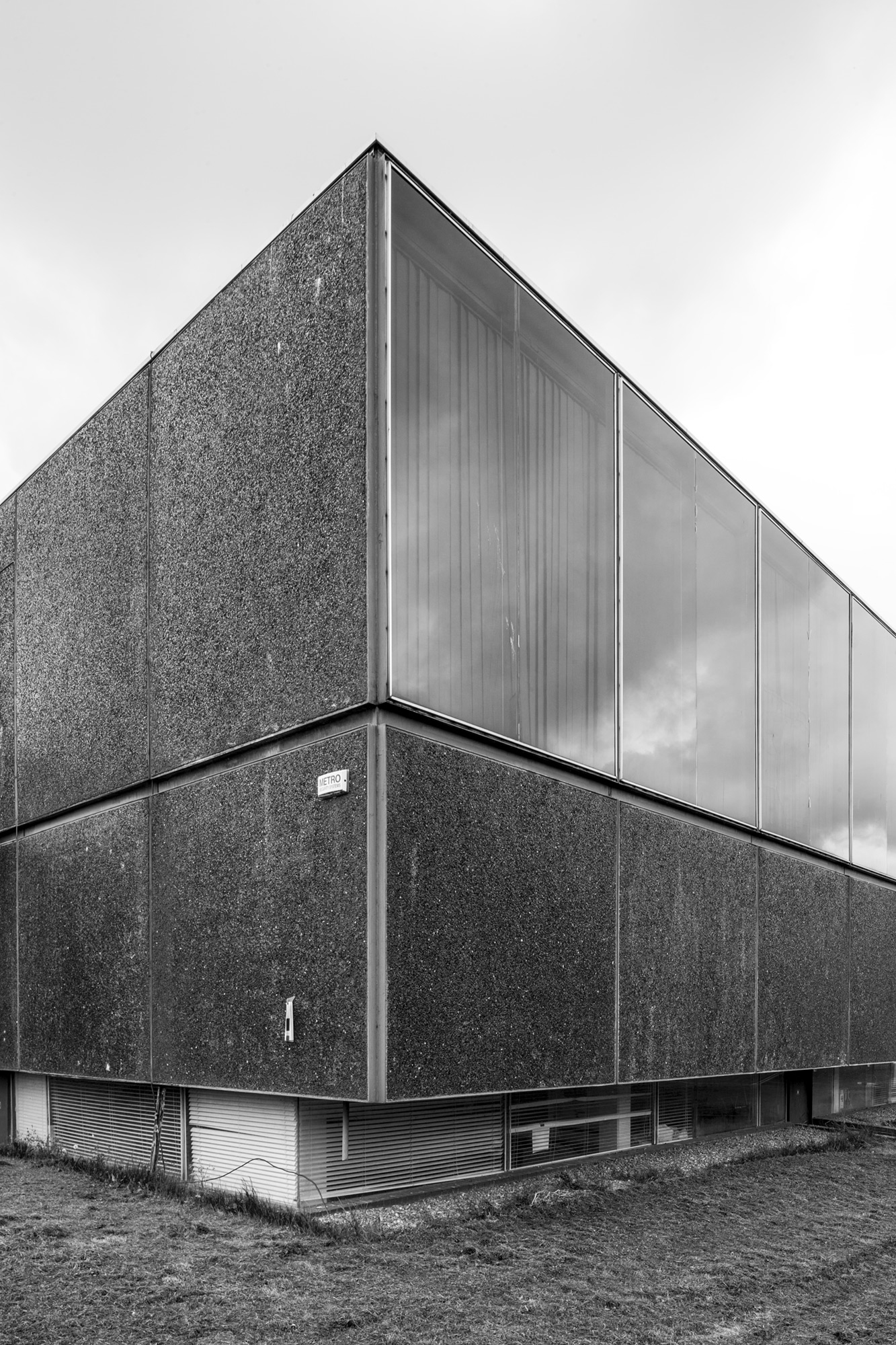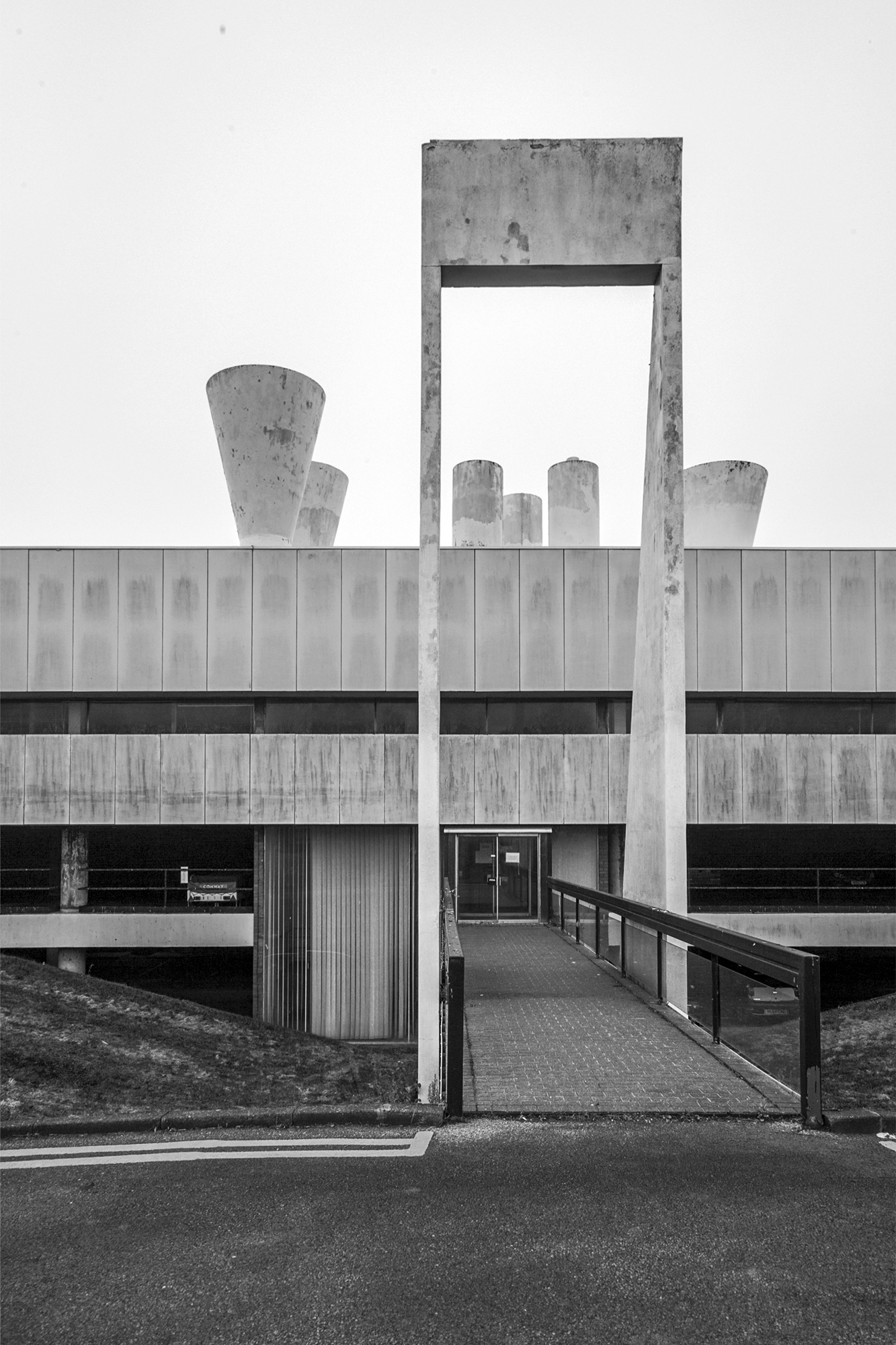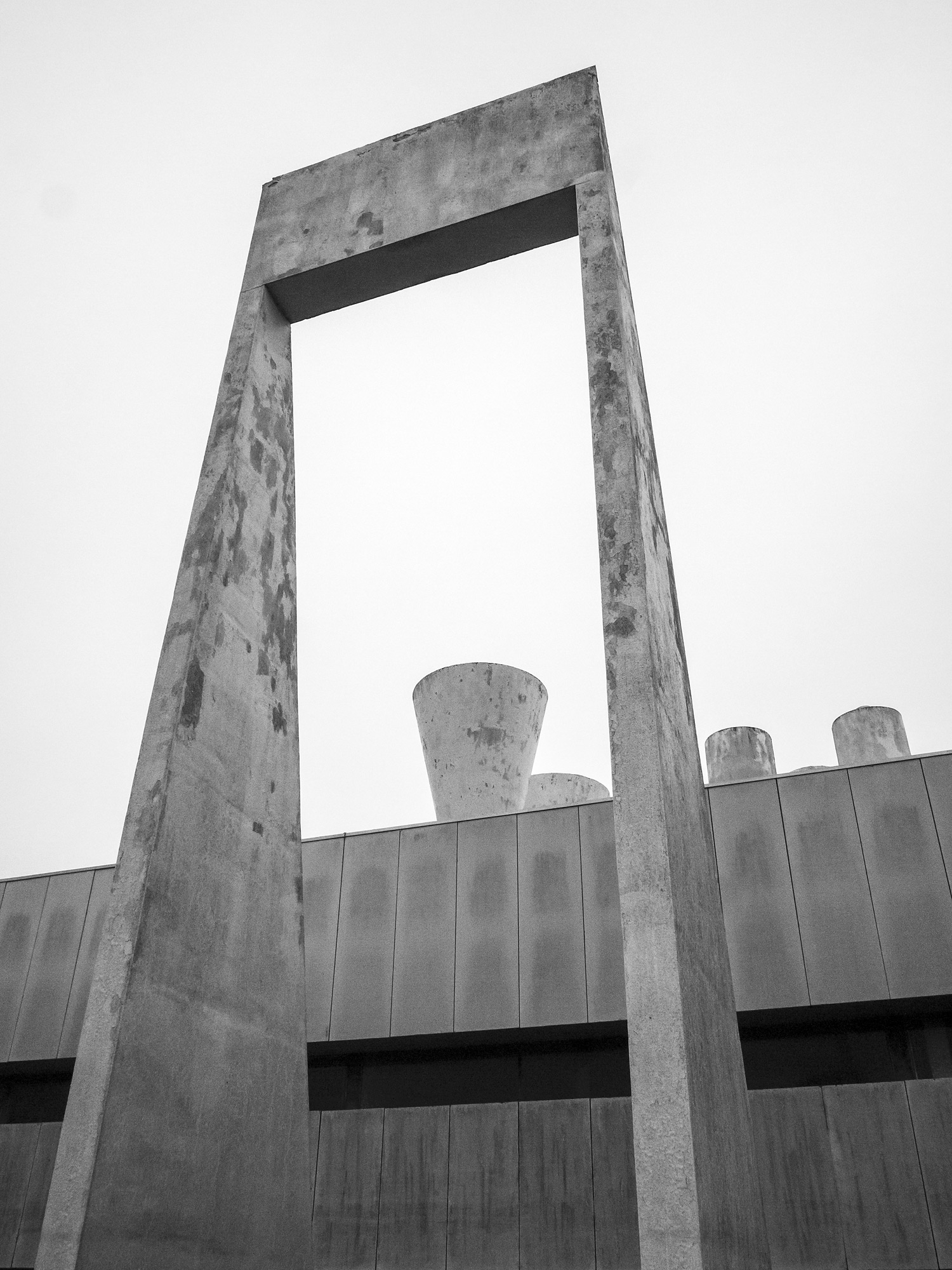Ryder and Yates
Killingworth
1966-67
Gas research station. Designed in 1965, built 1966-67. Designed by Ryder and Yates. Extension designed in 1974 and built in 1975-6 to originally contain a restaurant, a lecture theatre, classrooms and workshops is attached to the south and was also designed by Ryder and Yates. Painted concrete precast panels to main block with site-cast concrete roof features and portal; 1975-6 pavilion clad in black precast concrete panels with an aggregate of broken Guinness bottles. Main block of three storeys having a rectangular plan which comprises a fixed element to the front (containing entrance and car parking to two lower floors and originally containing library, administration and canteen). To the rear is a flexible section arranged in two parallel zones extending backwards, originally comprising flexible laboratory space on two floors, beside which is a full-height workshop. Front to Station Road of three storeys, the upper articulated by a continuous horizontal strip window, which returns along both side elevations; the lower storeys, comprising car parking, is open and partly covered up by two man-made grassy mounds of unequal height which rise up in front. Circular pilot is to car park floors, also returning on side elevations. To the centre is a projecting entrance bridge at first floor (street) height and at the far side is attached a full-height site-cast painted concrete portal of triangular section. Flat roof At roof level are three large, funnel-shaped water tanks and three cylindrical vents, grouped so that the vents are symmetrical, with two funnels to the south and one to the north. Attached to the south by a raised glazed tube is the 1974 restaurant pavilion, lower than the main block and also flat roofed. This has a fully-glazed ground storey, a taller, blind, ‘middle.’ layer of panels and a still taller top layer of panels, glazed to full height on the east side with full-height bronzed glass panels. There is a circular window on the south side in the upper layer, and light staircases from this level to either end. Internally, the main building contains elements of the original flexible partition system, designed on a 3’4″ planning grid, in parts of the former laboratory areas on both floors. The building was designed from the start to be both flexible and extendable, and this has been done, following the original elevations. Interior of 1974 pavilion not inspected. A building of great purity of form and considerable architectural subtlety – noted, for example in the slight and deliberate deviations from the symmetrical in the front elevation. The Architects Journal 24 Apri1 1968.
Listed: Grade II*
